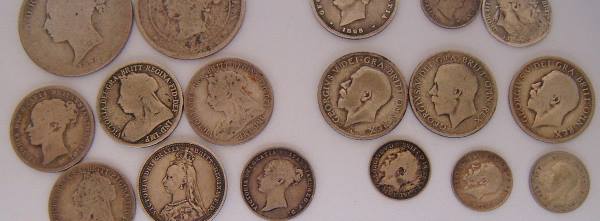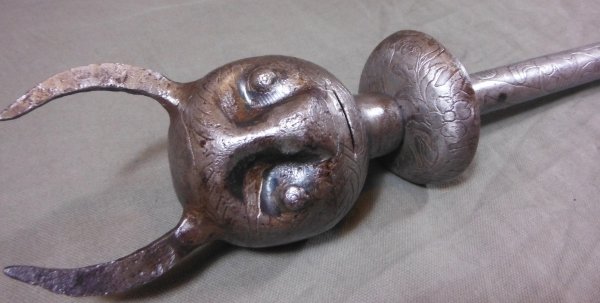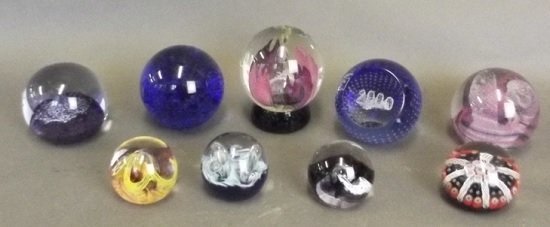The stock market has proved unreliable in recent years, pensions are worth a fraction of what they were even a few years ago, and low interest rates have made the Building Society unappealing.
So how do you create a little nestegg for the future, with all these traditional methods seemingly down and out, and looking much less attractive?
The answer could be to buy a piece of the past; documents and autographs from a bygone era.
Over the last 30 years or so, autographs of famous people from the past, and historical documents have soared in value – and are continuing to do so at rates which not only far outstrip the high street banks, but can be absolutely astronomical.
In a sale just a few weeks ago for example, an early 19th century letter from America sold for £1,300, paying a handsome dividend to the vendor – who had picked it up at another auction for just £70 a month before. That’s something like 1500per cent in one month!
Similarly letters and autographs of famous names from the past continue pay handsome profits. Back in the 1970s you could pick up a letter of Nelson, for example for under £100. You would have to pay far in excess of £2,500 for the same letter today. And Nelson is not an isolated case.
Names like Samuel Taylor Coleridge, Ernest Shackleton, Florence Nightingale, Gustav Holst, Sir Richard Burton, Thomas Guy, Garibaldi, Robert E Lee, ‘Buffalo Bill’, George Bernard Shaw, the Duke of Wellington and Louis XIV, to name but a few, are among those available at auction in the near future. All have risen vastly in value over recent years and will possibly net considerable profits for their owners.
But it’s not just the names from the distant past which continue to soar. Back in the 1960s hundreds of people crowded stage doors up and down the country to get the precious signatures of their pop idols – people like the Beatles, the Rolling Stones, and the Jimi Hendrix Experience. Now those often tatty pieces of paper bearing those signatures are very precious. The last set of authentic Beatles signatures which passed through my hands, obtained by a hotel employee in Cornwall where the fab four were making The Magical Mystery Tour, was knocked down for £4,200. And if you were one of those who managed to get Jimi Hendrix to sign for you – and there were many – then you would have a piece of paper which would be worth around £400 today.
But a document doesn’t have to bear the signature of a famous person from the past to make it valuable. Many specialist auctioneers in the historic documents field, are now regularly selling items which reach considerable prices because of their historic significance or content.
A good example is material from the First World War which is now going up so rapidly in value that it is staggering. A grandfather’s letters home from the Western Front which have gathered dust in the attics of many houses over the past 90 years are now fetching hundreds if not thousands of pounds. One small document sold recently was a personal reminiscence of a soldier who had taken part in the retreat from Mons in 1914 – it sold for just under £400 – against an estimate of £70.
Similarly a bundle of letters written by the Bishop of Dromore in Northern Ireland at the beginning of the 19th century, which had been picked up for next to nothing at a leading London auctioneers, came to me with no expectation from the vendor.
“If you can get £50 for them, then I will be happy,” he said. But once I started looking at them, it became obvious that the Bishop was providing a considerable amount of information on the life of Northern Ireland at the time, discussing things like the newly introduced smallpox treatments, the poverty of the people, and even the threat of Napoleon. I thought they deserved an estimate of £300 to £400 – and then I stood open mouthed as the bidding took them to a final price of £11,000. They were bought by a major American University.
Investing in the past like this has another considerable advantage. If you put your money into the stock market or the high street bank, all you have to show for it as the years go by are boring annual statements!
If on the other hand you invest in documents, you have something which will provide you with years of endless pleasure – while continuing to make you money. If , like me, you are ‘into’ history, then the pleasure can be easily derived from just holding something which was once in the hands of a famed figure from the past. I have been privileged in my time to hold original manuscripts of some of our greatest composers and writers and items like the menu for the celebration lunch given to Bleriot a few hours after he made his historic flight. I have held documents signed by Elizabeth I, Sir Francis Drake, Henry VIII, Oliver Cromwell and ‘Bonnie’ Prince Charlie. I have even had the first letter Napoleon wrote the day he arrived in St Helena.
When you hold something like that you get a tingle, I can assure you. Because at that moment you have that personal link to the great man, or woman of the past – something which you could not achieve with any other antique.
Similarly documents which signify a major event in history can give you the same buzz, even if they are not signed by anyone famous. I will never forget holding the diplomatic message to the ultimatum to Germany which started the First World War, and immediately I had this intense feeling that all that happened in that awful tragedy happened as a result of this document. A chilling experience.
But even if history is not your thing, then investing in documents of this kind can be most rewarding for reasons far beyond financial gain. Many items are extremely attractive, for example, and can quite easily be displayed in a frame on the wall (as long as you are careful and don’t expose them to direct sunlight). This is particularly so with Royal documents, which are often written in fine calligraphy and bear examples of the Royal Seal as well as the signature of the Monarch. With the invention of photography, signed photographs became very popular, and these of course make fabulous display items – with the added bonus that they are making you money every minute you are looking at them.
Of course with any investment you have to know a little bit about what you are doing in order to avoid costly mistakes. You wouldn’t invest in the stockmarket without taking some sort of advice, would you? And the same is the case with this sort of investment. That’s where people such as myself or others can help with impartial advice – and indeed there are a number of very good professionals in this country who will gladly put together what would amount to an investment portfolio of documents for you.
It is important that you do take the right sort of advice. Like with shares, there are solid earners whose value mounts steadily – such as the major figures of history whose documents may be somewhat costly to obtain, but will have an almost guaranteed value increase over the years. And there are mavericks whose value rockets from being virtually worthless to being worth a fortune almost overnight – like the first edition of the first Harry Potter novel, published just five years ago for just under £20 and now changing hands at almost £20,000.
But beware! Not everything goes up in value and just as with shares, an unwise investment can cost you dear.
The major pitfalls are buying documents signed by modern celebrities whose fame only lasts a few years, and of course the most pernicious element of the whole market: fakes and forgeries.
It is a sad fact that in Britain today there are many active forgers and you must always be on your guard before buying what might seem to be a ‘snip’. Generally they operate in the fields which are most popular – rock and pop especially the Beatles, sport, the Third Reich especially Hitler, the Dambusters especially Guy Gibson, and Titanic memorabilia. Indeed a friend of mine who is one of the best experts on the Titanic told me that one of the survivors would have had to have driven an articulated lorry off the ship to house all the memorabilia he was supposed to have saved and which now appears as ‘genuine’ on the market.
I remember being sent a ‘Guy Gibson’ letter, supposedly written to the family of one of the Dambuster pilots who was killed on the raid. I had every reason to believe it was genuine – the paper was of the 1940s, the typewriter was correct, the wording was the same as other genuine letters and the signature looked OK. It was only when I was contacted by chance by the daughter of the pilot who told me that the address the letter was sent to never existed that I was able to unmask it as forgery. The forger had gone to the extent of obtaining the actual typewriter on which the genuine letters had been produced, and a stock of RAF paper from the time. Had the letter been genuine, it would have sold for in excess of £6,000. As it was, I had the sad duty of informing the vendor, a bone fide collector who had paid £1,000 for it some years before, that he had lost all his money.
Another area for caution is that of facsimiles and autopen signatures. Many leading figures do not have the time to write their signature on every letter and document, so they have printed signatures made which look like the real thing. This is certainly the case with many Churchill letters and over the years I have had to disappoint so many people who thought they had a valuable Churchill letter in their possession, but what they actually had was a clever facsimile.
In some cases, such as the present Royal Family and American Presidents, they have to sign so many things that they use a machine called an ‘autopen’, which ‘signs’ their documents using a fountain pen in a holder. The signatures look genuine, but again render the documents virtually worthless.
Secretarial signatures of the stars also abound, to the extent that I for one would not accept for auction any signed modern celebrity item unless it came with the provenance that it was obtained in person. So many collectors have, over the years built up collections of ‘signed’ photographs of Hollywood and other stars by writing away to the studios and management companies. What they get back is certainly signed, but more often than not, by a secretary employed for the purpose. This is certainly the case with many Beatles signatures – to the extent that there are experts who will even tell you the identity of the secretary who did the signing.
But having sounded those notes of caution, there is no doubt that investing in the past will reap handsome rewards in the future, and ensure that your short and long term investments are well catered for.
Here are a few golden rules which should help you on the way:
1. Always seek proper advice before making major purchases.
2. Never get rushed into making a hasty decision – particularly from a private vendor.
3. If you are buying from a private source, take time to check out the reputation of the seller – if he’s genuine then he shouldn’t have any qualms about you checking out whether he really was a best mate of Paul McCartney.
4. Never buy anything in the field of rock and pop, modern celebrities, sport, Titanic, Third Reich, Hollywood, and Dambusters without checking provenance – even if you are buying from an auction house or a dealer. If the information is scanty or dubious, don’t risk it. And don’t even think about buying if the item was obtained by writing to a studio, management company or fan club.
5. Take time to do proper research. Check out current prices on the open market (easily done with the aid of the internet). Get a ‘feel’ for what is a fair price for a particular type of document, so that you know when you are being asked to pay over the odds – or when you are getting a bargain.
6. Try to obtain the best quality you can afford. As prices rise over the years, so will the gap widen between better and poorer material.
7. Take an interest in what you are doing and enjoy it as you are going along – it will reward you a thousand fold as time goes by.






